Like a modern royal: Inside 6 of the most opulent homes in India

From a prince’s party pad to a whimsical Jaipur apartment, these extravagant Indian homes embrace timeless royalty.

Embark on a tour of six homes in India that exude extravagance, grandeur, and tradition seamlessly intertwined with modern amenities and luxuries. Prepare to be captivated by the symphony of history and culture resonating within these magnificent sanctuaries.
A Delhi Home Where Memories And Histories Intertwine
Residing in a leafy 1950s neighborhood of garden bungalows adjacent to the Delhi Zoo, the Princess of the erstwhile kingdom of Kuchaman, Priti Pratap Singh, calls home. The interiors of her inherited residence boast soaring 16-foot-high ceilings and showcase a dazzling array of antique textiles and traditional artwork, effortlessly amplifying the theme and grandeur of royal Rajasthan. Priti Pratap Singh’s home is a palimpsest of her diverse life, where she says, “memories are interwoven with history.” Emblems of personal, family, and work history create a rich tapestry, ranging from sepia photographs capturing age-old courtly ceremonials to modernist portraits gifted to her by Cuba’s leading artist, René Portocarrero. Over the years, she has made adjustments to the three-bedroom flat on the ground floor, which she shares with her two daughters, to align with modern living while preserving its period architectural features.
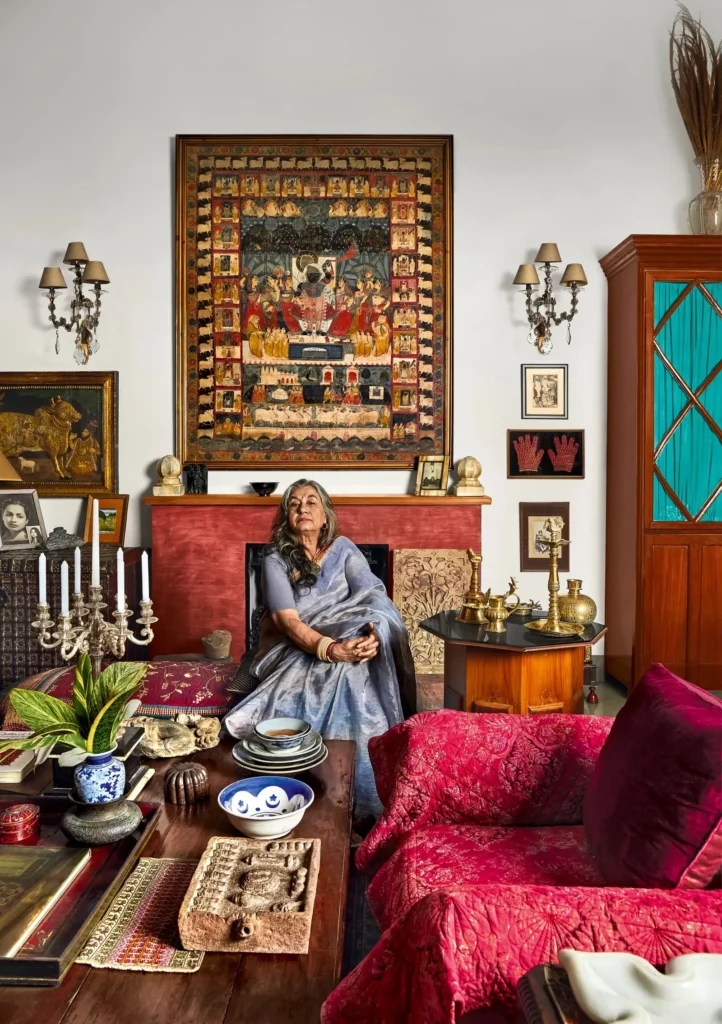
Adorning the space above the fireplace in Priti Pratap Singh’s living room is an antique pichwai. Flanking it on either side are French crystal sconces discovered in a London flea market. The fireplace itself has been meticulously hand-colored with terracotta powder and varnished. Among the cherished items is a framed pair of silk woven gloves, a thoughtful gift from her father for riding lessons. One of her quilts gracefully drapes a sofa chair, while a tall glass cupboard with green blinds proudly houses her collection of quilts.
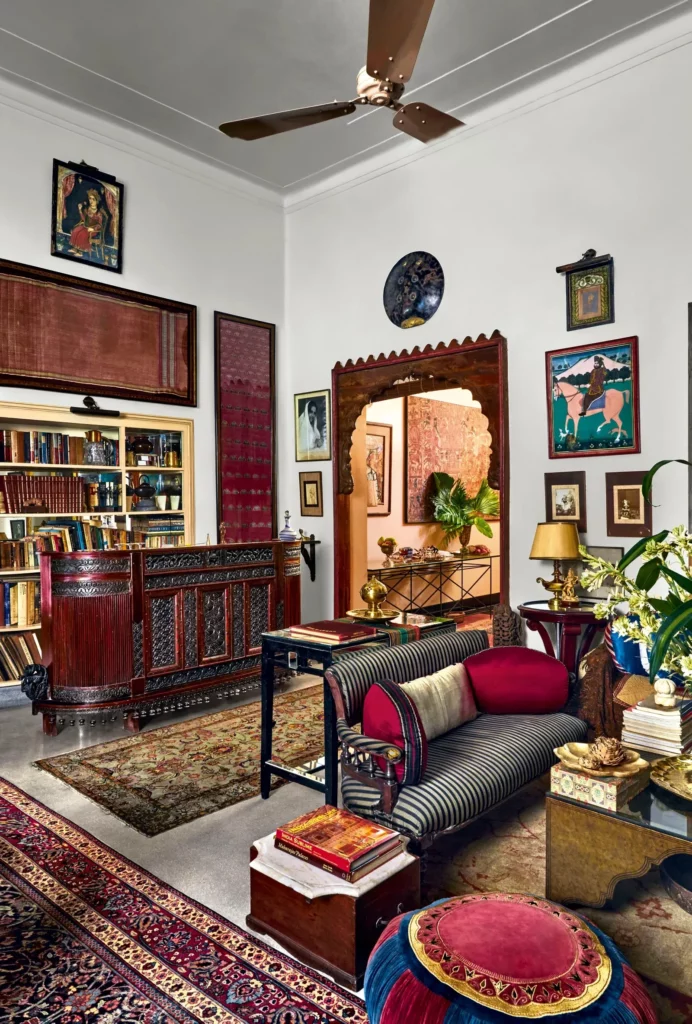
A wooden archway frames the entrance to the dining room from the living room. Positioned above the bar, crafted from intricately carved Gujarati woodwork, are antique brocade textiles, meticulously preserved behind glass.
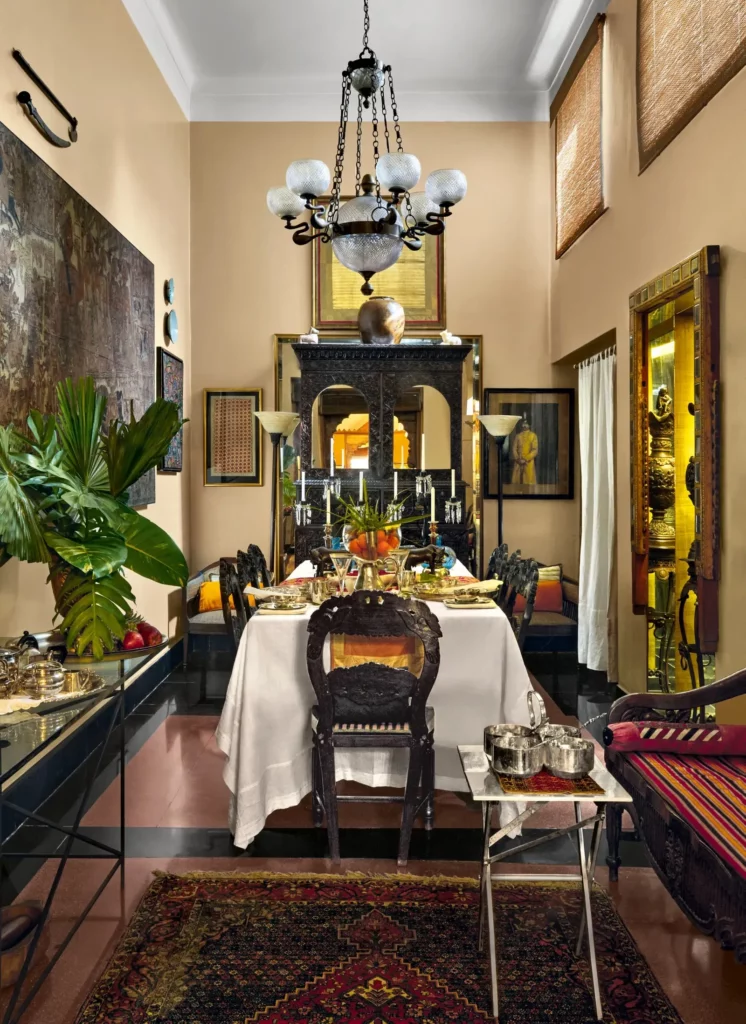
The dining room, once the kitchen, was transformed by Singh, who introduced clerestory windows into the wall and mirrored a redundant door to enhance both space and light. The carved cabinet at the far end hails from Mumbai, and the chairs are sourced from Goa. Adorning one wall is a substantial Pabuji ki Phad painting from Rajasthan.
India Meets Europe In This Graceful Colaba Abode
Cormac Lynch, the Irish interior architect, masterfully blends the two cultures he calls home—India and Europe—in his Colaba apartment. Located a stone’s throw from the Taj Mahal Palace Hotel, the house was constructed during the height of Victorian Empire power, featuring high ceilings, tall paneled doors, and a sunlit loggia. Reflecting on his affinity for places with deep character, Cormac notes, “I have always been drawn to places of deep character.” From a Knole sofa covered in Banarasi silk saree to unlined festoon blinds that allow the sun to filter through, each piece in his home holds a captivating anecdote.
“A sense of place is very important to me,” states Cormac, a sentiment evident in the home’s design. This is showcased through elements such as the striking red-lacquered dining room, Jeanneret chairs, and a Japanese ribbed silk lantern. The well-curated home serves as a layered tribute to the many craftsmen who have shaped the space with their collective skills and vision.
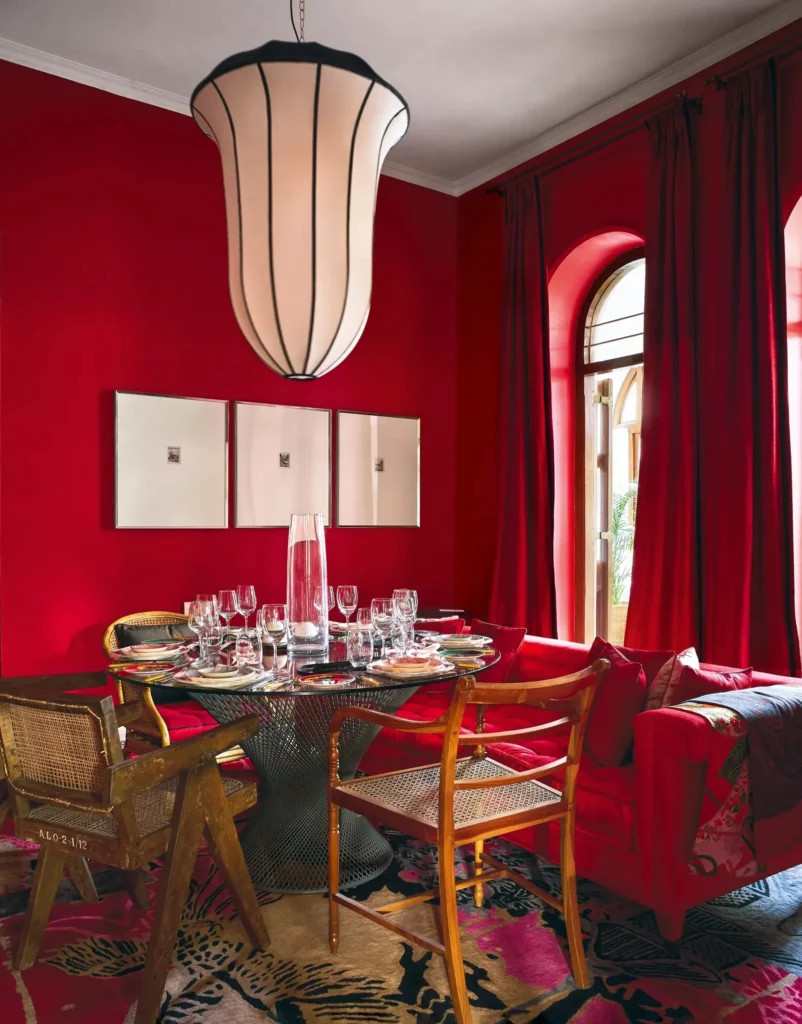
Guests dining in this strikingly red room, adorned with echoes of the Far East, use knives that once belonged to Cormac’s grandmother. Acquired during a trip to Rome many years ago, the pictures on the walls add to the room’s character. The bespoke red chinoiserie/Japanese-style carpet beneath the Divya Thakur–designed table is woven with images of Indian peacocks, Chinese landscapes, and Tibetan vases—crafted specifically for the room. Adding a touch of Japanese elegance, a Japanese obi (sash) gracefully hangs over the arm of the banquette sofa.
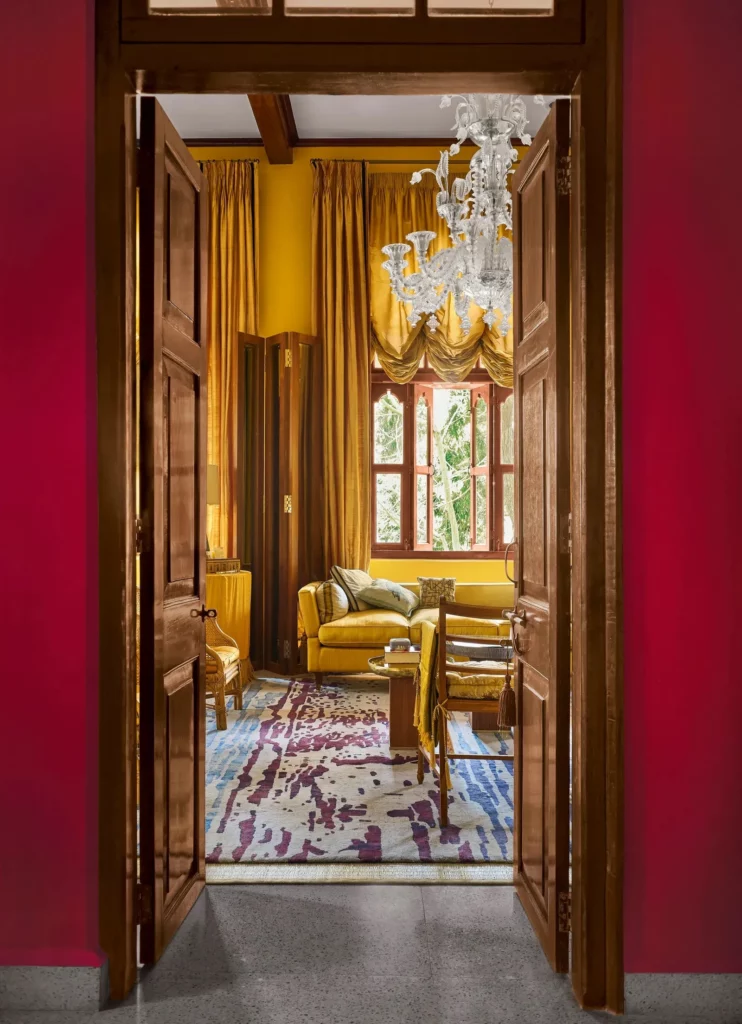
In the drawing room, a grand Murano blown chandelier commands attention. Cormac Lynch shares a laugh as he mentions, “It is quite colossal in size and took me a long, long time to find.” The Knole sofa, draped in Banarasi silk and dyed to complement the curtains, adds to the opulence. Scattered cushions from Jim Thompson and Le Mill, located near the apartment, enhance the aesthetic. The wool carpet, originally made in India for Cormac’s old art deco drawing room in Churchgate, seamlessly complements the current space with its maroon pattern echoing the color of the dark-teak Victorian ecclesiastical window frames. Adding a touch of elegance, jaunty tassels from Bevilacqua in Venice adorn the door handles.
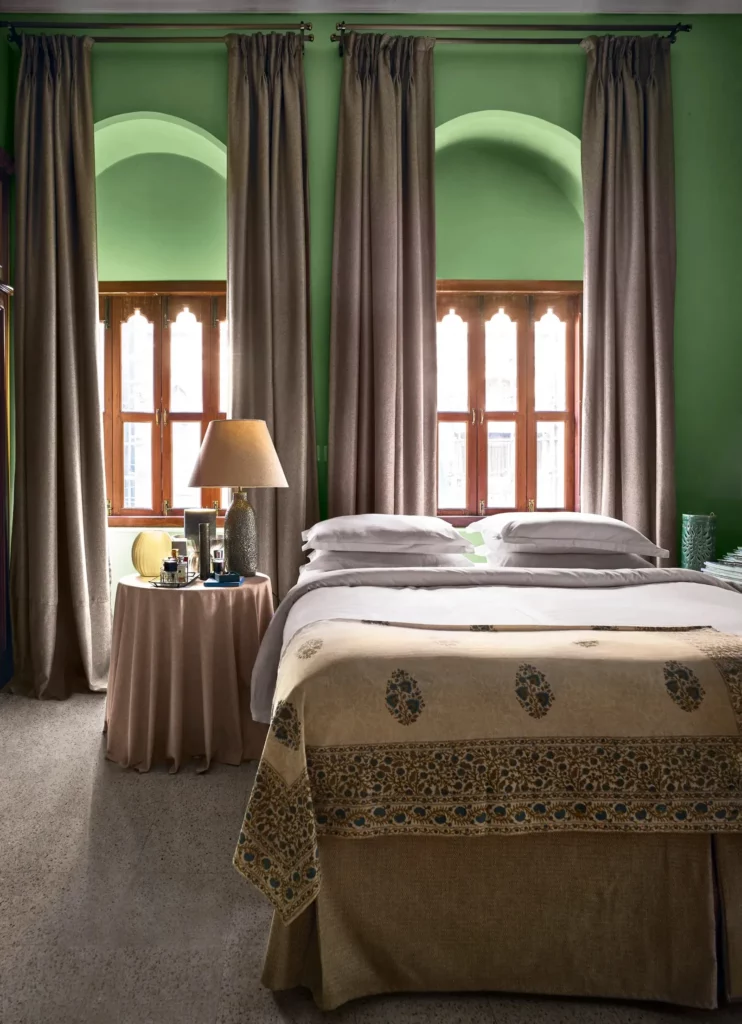
Cormac’s bedside table is adorned with a solid bronze lamp featuring a shagreen pattern, casting a warm glow on a collection of cufflinks. The assortment includes exquisite cameo cufflinks from Sir John Soane’s Museum in London, Viren Bhagat cufflinks, and a charming tray acquired during a recent visit to the 47 Jobner Bagh Hotel in Jaipur. The bed, skirted in bespoke Irish linen, is accented by a throw discovered in a market in Jaipur.
A Palatial Party Pad That Belongs To A Prince
Padmanabh Singh’s bachelor pad within the Suján Rajmahal Palace encapsulates a lifestyle that seamlessly merges the contrasting realms of tradition and modernity. Concealed behind the palace’s candy-pink art deco facade are 14 royal apartments, suites, and palace rooms, originally serving as the private residence of the royal family until its transformation into an exclusive palace hotel in 2014.
Even in its new guise as a hotel, the palace remains the preferred dwelling for erstwhile royals like Padmanabh, the 303rd descendant of the erstwhile royal family of Jaipur. Designed by Adil Ahmad, the interiors artfully showcase architectural elements representing Rajput, Mughal, Palladian, and 1930s art deco styles, added over the centuries by various occupants. However, reflecting its current occupant’s youthful spirit, the 3,126-square-foot space has gained a reputation as a well-known party pad in the city!
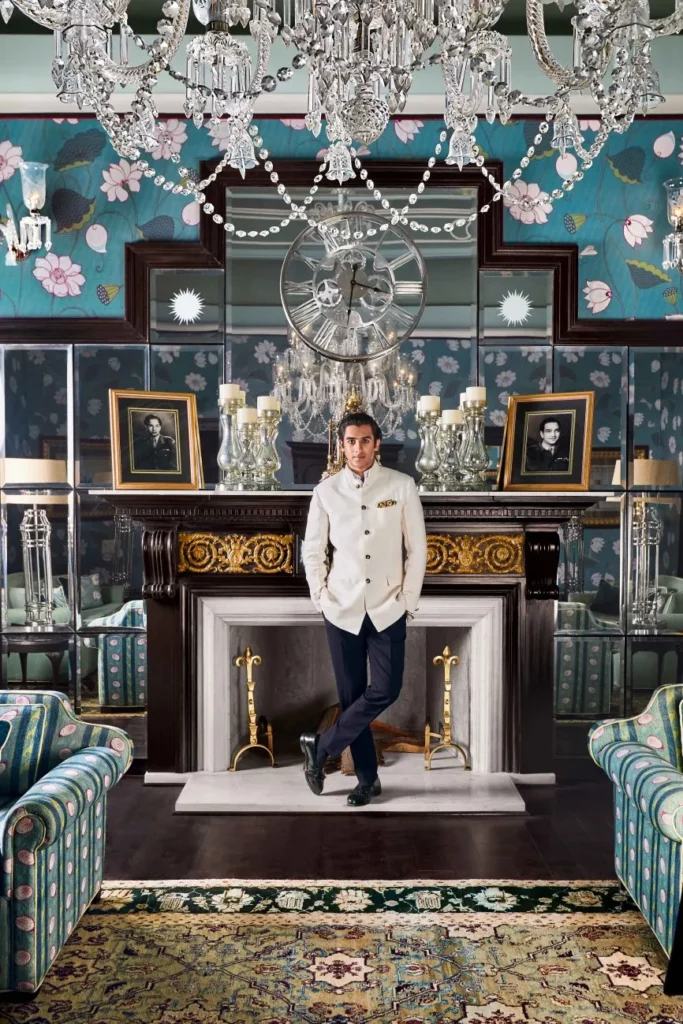
Adorning the mantle behind Padmanabh Singh are photographs of Maharaja Sawai Bhawani Singh on the left and Maharaja Sawai Man Singh II. Suspended above is a 20th-century chandelier, casting its glow over the 19th-century Jaipur Jail carpet.

The hunting trophies showcased were collected by Maharaja Sawai Madho Singh II. Drawing inspiration from the five colors on Jaipur’s flag from its princely state days, the wallpaper pattern adorning the apartment is sourced from Good Earth. The wooden flooring, likely installed when Maharaja Sawai Man Singh II took residence in the palace, dates back to the 20th century.
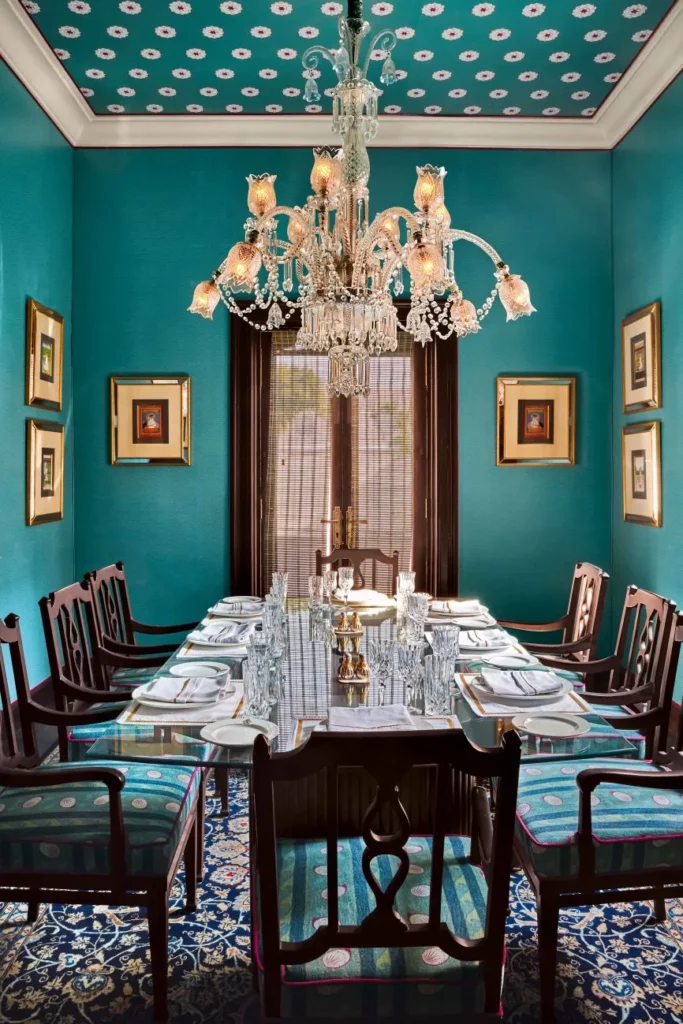
The design motifs in this dining room draw inspiration from patterns observed in the City Palace. While the table, carpet, and chandelier boast contemporary designs, the chairs are vintage pieces from the 20th century. Adorning the wall are 19th-century Jaipur school paintings depicting rulers of Amer and Jaipur. Adding a regal touch, the cutlery features the Jaipur royal crest.






